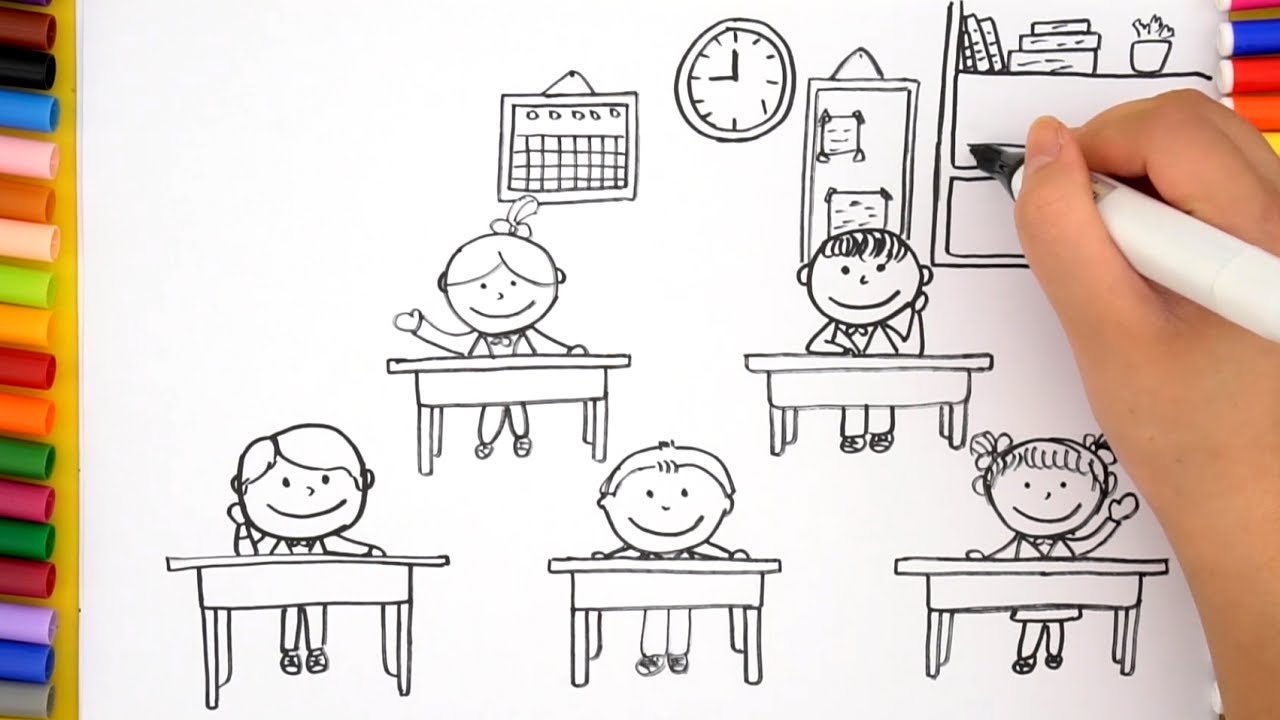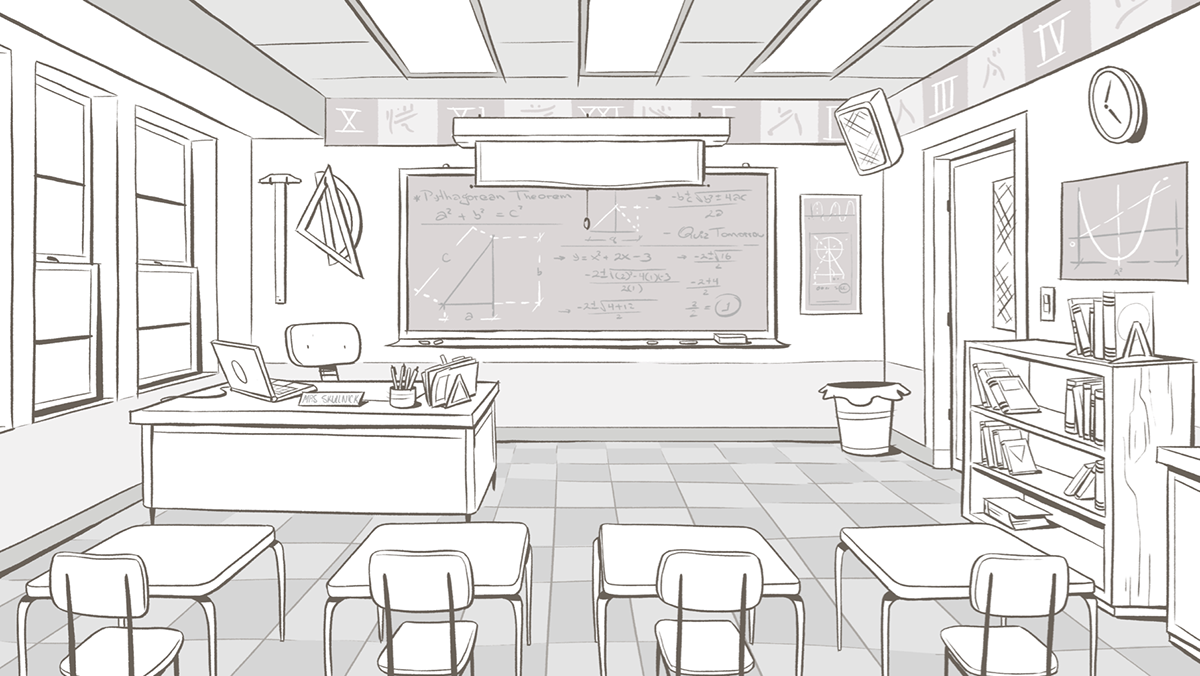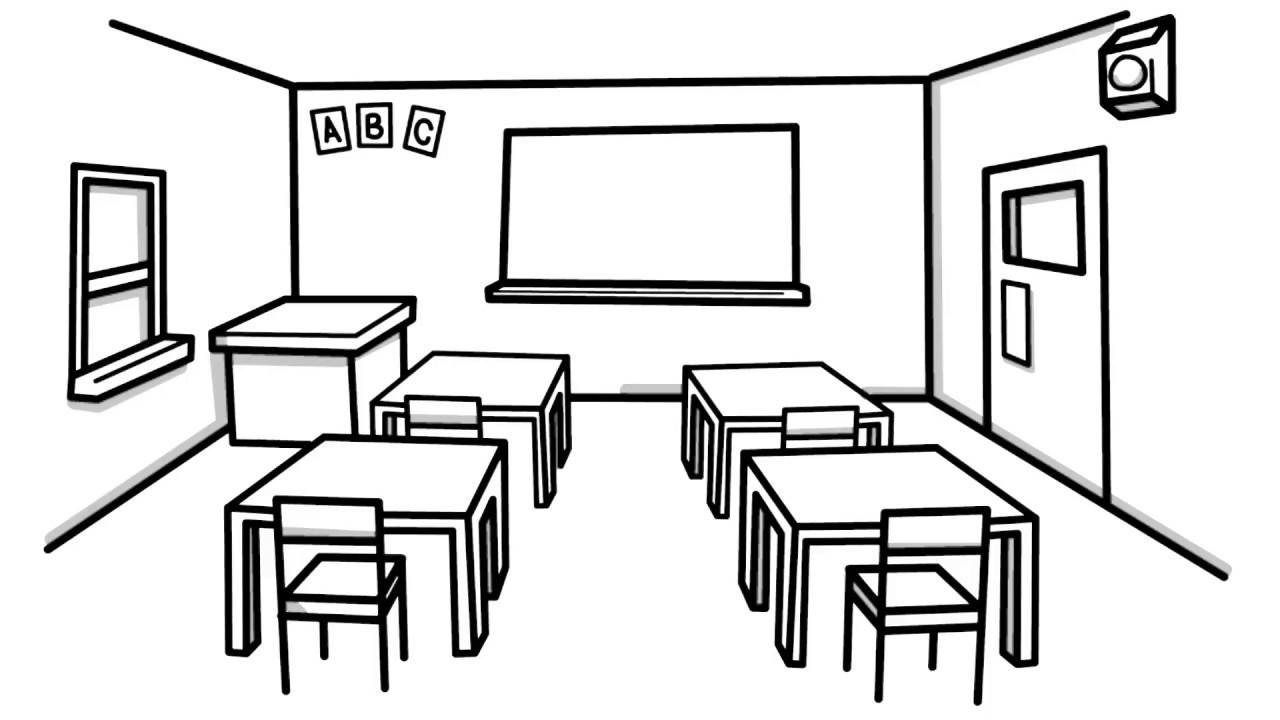School classroom drawing at getdrawings
Table of Contents
Table of Contents
Are you struggling with how to draw a classroom? Do you find it hard to replicate that perfect size and perspective of a classroom on your drawing board? No need to worry as this blog post will guide you through the process, step by step.
Pain Points Related to How to Draw a Classroom
Many artists struggle with drawing large spaces like classrooms due to the intricate details involved. It can be overwhelming to figure out the right angles, the right use of light and shade, and the right proportions of objects to create a pleasing image.
How to Draw a Classroom
The first step in drawing a classroom is to choose a perspective that suits your artwork, and then sketch out the basic shape and dimensions of the classroom using light, loose lines. Place tables, chairs, and blackboards in the drawing to get a better idea of how the scene will look. Next, add more details to the drawing such as books, stationery, and other relevant items to bring the classroom to life. Finally, use appropriate shading techniques and colors to enhance the depth and dimension of the artwork.
Summary of Main Points
This blog post has provided a comprehensive guide on how to draw a classroom, from identifying common pain points faced by artists to practical steps to create a realistic classroom scene. Keep in mind the importance of perspective, proportion, and shading while drawing a classroom.
How to Draw a Classroom: Tips and Tricks
When I first started drawing classrooms, I always struggled with perspective and proportions. I found that breaking the classroom down into basic shapes like squares and rectangles helped me get a better sense of the overall structure. Also, remember to pay attention to lighting and add shadows to create depth and interest. Finally, don’t forget to have fun with your drawing and experiment with different angles and perspectives.
Tools You Need to Draw a Classroom
To draw a classroom, you will need a range of drawing tools, such as pencils, erasers, rulers, and pens. You may also consider using a grid system, or a perspective tool, to help create more accurate artwork. Additionally, consider using a variety of colors and shading techniques to enhance the depth and dimension of the drawing.
Choosing the Right Perspective
The perspective you choose can greatly affect the look and feel of your classroom drawing. One popular technique is to use a two-point perspective, where two lines converge at a vanishing point on the horizon line to create depth and distance. Another technique is to use an aerial perspective, which involves drawing objects in the background smaller and lighter to create the illusion of space.
Adding Complexity to Your Classroom Drawing
To take your classroom drawing to the next level, explore different angles and perspectives, such as view from a corner or including a foreground element like a student or a teacher. Try experimenting with depth of field, which involves blurring objects in the distance to give the impression of a wider space.
Question and Answer
Q. What is the most important aspect of drawing a classroom?
A. The most important aspect of drawing a classroom is ensuring that you get the perspective and proportion correct. This is essential in creating a realistic image that resonates with viewers.
Q. What drawing tools do I need to draw a classroom?
A. To draw a classroom, you will need a range of drawing tools, such as pencils, erasers, rulers, and pens. You may also consider using a perspective tool, such as a grid system, to help create more accurate artwork.
Q. How do I create depth and dimension in my classroom drawing?
A. You can create depth and dimension in your classroom drawing by paying attention to the lighting and adding shadows. Experiment with different shading techniques and colors to bring your artwork to life.
Q. How do I choose the right perspective for my classroom drawing?
A. The right perspective for your classroom drawing depends on the overall mood and message you wish to convey. Experiment with different angles and perspective styles, such as two-point perspective or aerial perspective to find the best fit for your artwork.
Conclusion of How to Draw a Classroom
By following these tips and tricks, you’ll have all the tools you need to draw a realistic and engaging classroom scene. Remember to sketch lightly, pay attention to perspective and proportion, and experiment with different shading and coloring techniques. With practice, drawing classrooms will become effortless.
Gallery
School Classroom Drawing At GetDrawings | Free Download

Photo Credit by: bing.com / classroom drawing school draw kids coloring drawings pages getdrawings
Classroom Drawing At PaintingValley.com | Explore Collection Of

Photo Credit by: bing.com / classroom drawing drawings paintingvalley behance disney
How To Draw A CLASSROOM For KIDS 🍏🎒📚 ️ Classroom Drawing For Kids

Photo Credit by: bing.com / classroom coloring kids pages drawing draw creative easy school drawings colorful pencil choose board
School Classroom Drawing At PaintingValley.com | Explore Collection Of

Photo Credit by: bing.com / classroom drawing school draw class room kids drawings paintingvalley
Classroom Sketch By HellKitten2204 On DeviantArt

Photo Credit by: bing.com / classroom drawing sketch drawings deviantart paintingvalley






